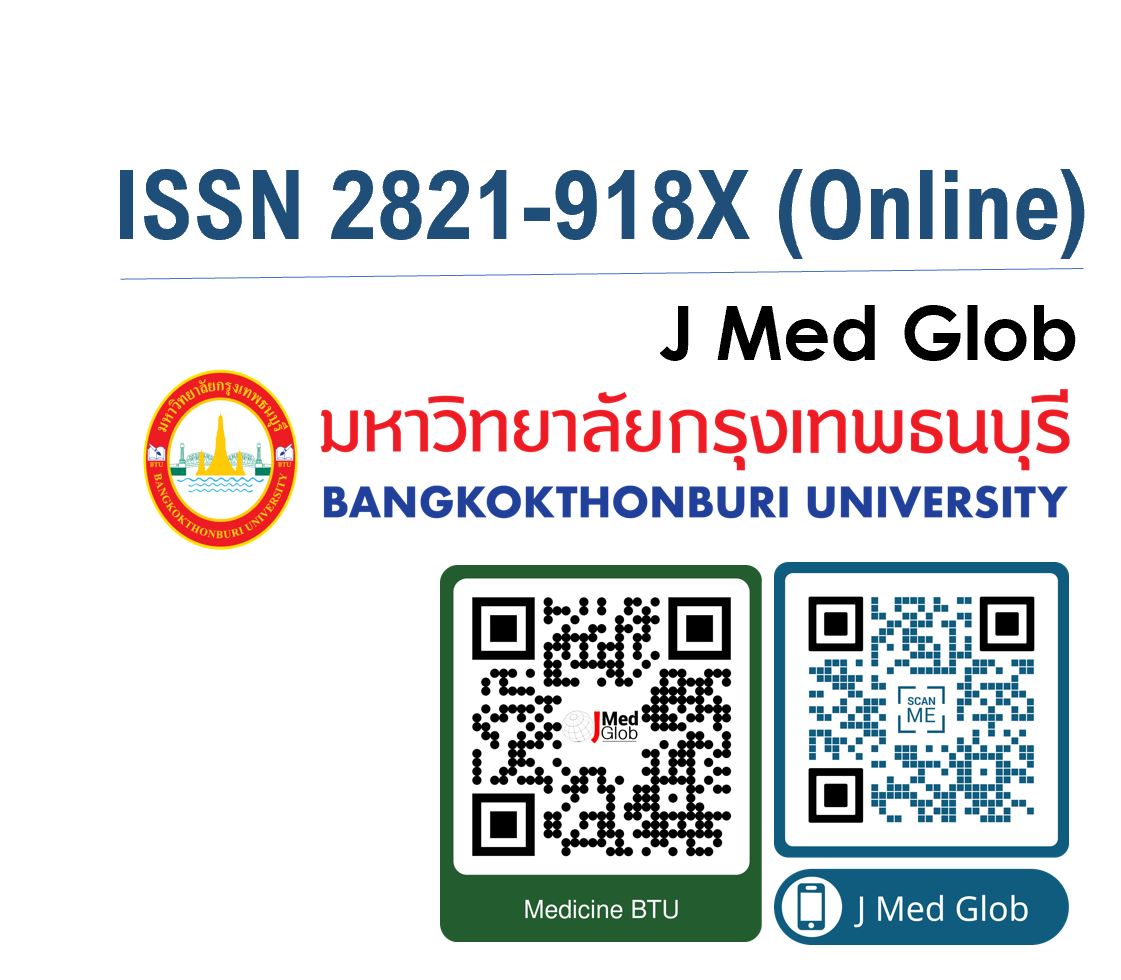การวิเคราะห์ปริมาณอะฟลาทอกซินในเส้นใยบุหรี่ไทยและต่างประเทศ
คำสำคัญ:
อะฟลาทอกซิน, การสกัดด้วยคลื่นอัลตร้าโซนิค, เอชพีแอลซี, บุหรี่บทคัดย่อ
งานวิจัยนี้ใช้เทคนิคการสกัดด้วยคลื่นเสียงอัลตร้าโซนิคเพื่อวิเคราะห์ปริมาณอะฟลาทอกซินในตัวอย่างบุหรี่ ทั้งที่ผลิตในประเทศไทยและนำเข้าจากต่างประเทศ การศึกษาได้พิจารณาพารามิเตอร์ที่เกี่ยวข้องกับสภาวะที่เหมาะสมต่อการสกัด ได้แก่ ปริมาณของสารละลาย เวลาการสกัด ชนิดของสารละลาย และอัตราส่วนของตัวทำละลายที่เหมาะสม ผลการวิจัยพบว่าสภาวะที่มีประสิทธิภาพสูงสุดสำหรับการสกัดอะฟลาทอกซินจากตัวอย่างบุหรี่คือการใช้สารละลายผสมระหว่างอะซีโตไนไตรล์และเมทานอล ในอัตราส่วน 1:1 v/v ด้วยปริมาตร 60 มิลลิลิตร และใช้เทคนิคอัลตร้าโซนิคสกัดเป็นเวลา 40 นาที ผลการศึกษาไม่พบการปนเปื้อนอะฟลาทอกซินในตัวอย่างบุหรี่ ทั้งจากประเทศไทยและต่างประเทศแม้จะเก็บรักษาไว้นานถึง 12 เดือน ซึ่งแสดงให้เห็นว่าบุหรี่ที่จำหน่ายทั่วไปมีความปลอดภัยในด้านการปนเปื้อนอะฟลาทอกซินสำหรับผู้บริโภค
เอกสารอ้างอิง
Jiang Y, Ogunade IM, Vyas D, Adesogan AT. Aflatoxin in dairy cows: toxicity, occurrence in feedstuffs and milk and dietary mitigation strategies. Toxins. 2021;13:283.
Campos-Avelar I, Colas de la Noue A, Durand N, Cazals G, Martinez V, Strub C, Fontana A, Schorr-Galindo S. Aspergillus flavus growth inhibition and aflatoxin b1 decontamination by streptomyces isolates and their metabolites. Toxins. 2021;13:340.
Stratton J, Shiplo S, Ward M, Babayan A, Stevens A, Edwards S. Assessing contraband tobacco in two jurisdictions: a direct collection of cigarette butts. BMC Public Health. 2016;16:622.
Areej Zuhair A, Mrwa Thamer H, Maha Muhamed K, Adel Saadi ALS, Noor Ibrahim K. Determination of Aflatoxins in feed by HPLC and PCR. J Food Pharm Sci. 2020;8:315-23.
Kim HJ, Lee MJ, Kim HJ, Cho SK, Park HJ, Jeong MH. Analytical method development and monitoring of Aflatoxin B1, B2, G1, G2 and Ochratoxin A in animal feed using HPLC with fluorescence detector and photochemical reaction device. Cogent Food Agriculture. 2017;3:1419788.
Hetmanski MT, Scudamore KA. A simple quantitative HPLC method for determination of Aflatoxins in cereals and animal feedstuffs using gel permeation chromatography clean‐up. Food Additives Contaminants. 1989;6:35-48.
Gazioğlu I, Kolak U. Method validation for the quantitative analysis of Aflatoxins (B1, B2, G1, and G2) and Ochratoxin A in processed cereal-based foods by HPLC with fluorescence
detection. J AOAC Int. 2015;98:939-45.
Gholizadeh S, Mirzaei H, Khandaghi J, Afshar Mogaddam MR, Javadi A. Ultrasound–assisted solvent extraction combined with magnetic ionic liquid based-dispersive liquid–liquid microextraction for the extraction of mycotoxins from tea samples. J Food Comp Analysis. 2022;114:104831.
ดาวน์โหลด
เผยแพร่แล้ว
รูปแบบการอ้างอิง
ฉบับ
ประเภทบทความ
สัญญาอนุญาต
ลิขสิทธิ์ (c) 2025 วารสารการแพทย์โลกาภิวัตน์

อนุญาตภายใต้เงื่อนไข Creative Commons Attribution-NonCommercial 4.0 International License.








